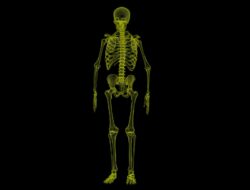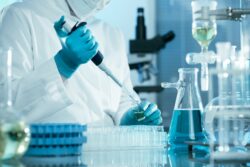Breakthroughs in Breast Cancer Detection and Treatment
This article provides a comprehensive view of the recent advancements in breast cancer detection and treatment. It underscores the critical role of early diagnosis, explores innovative treatment methods, and emphasizes the significance of emotional support during cancer management. It also offers a wealth of resources for further understanding, emphasizing the importance of proactive measures for prevention. Join us as we unravel the complexities of this prevalent disease, aiming to empower and inform.

Key Takeaways
- Imaging techniques like digital mammography and breast tomosynthesis revolutionize early detection.
- Personalized therapies tailored to the individual's specific type and stage of cancer optimize treatment efficacy.
- Genetic profiling allows for targeted treatments based on the patient's unique cancer profile.
- Recent advances signal a promising future for breast cancer care.
Understanding the Basics of Breast Cancer
Breast cancer, a multifaceted disease affecting the breast tissue, is a significant health concern requiring early detection and comprehensive treatment strategies. It's crucial to understand breast cancer risk factors, as they can significantly contribute to the development of the disease. These may include genetics, age, lifestyle choices and certain environmental factors. However, the presence of risk factors does not guarantee the occurrence of breast cancer, just as their absence doesn't ensure immunity. Early detection methods, such as regular mammograms and self-examinations, are pivotal in identifying the disease in its initial stages. The prognosis of breast cancer has been significantly improved by these advancements in early detection. Thus, public awareness about risk factors and early detection methods is a key component in the fight against breast cancer.
The Emotional Journey of Coping With Breast Cancer
Navigating the emotional landscape, marked by fear and resilience, is an integral part of the journey of coping with breast cancer, and it often necessitates a robust support system. Supporting caregivers, both mentally and practically, is vital to ensure a holistic approach to patient care. They are often the unsung heroes, providing physical aid, emotional solace, and constant encouragement. Yet, they too need assistance, guidance, and relief from their emotionally taxing roles. Furthermore, survivorship challenges extend beyond the medical realm. Survivors grapple with psychological distress, fear of recurrence, and the struggle to regain normalcy. Thus, addressing these mental and emotional components is equally crucial as tackling the physical disease, creating a comprehensive strategy for breast cancer management.
Exploring Key Statistics and Resources in Breast Cancer Research
In the continuously evolving field of oncology, over two million new cases of breast cancer were reported globally in 2018, and advancements in research and technology are providing unprecedented resources and methods for early detection and effective treatment. This progress is largely attributable to significant breast cancer research funding, which fuels the development and implementation of breakthrough technologies. These technologies not only enhance diagnostic accuracy but also improve the efficiency and efficacy of treatment strategies. Multiple resources, including the National Institutes of Health and the U.S. Department of Health and Human Services, are instrumental in supporting and disseminating research findings. These entities facilitate the translation of research into clinical practice, thereby directly benefiting patients and contributing to the declining breast cancer mortality rates.
Important Steps in Breast Cancer Prevention
Several crucial steps can significantly contribute to the prevention of breast cancer, reducing the risk in both high-risk individuals and the general population. Genetic counseling plays a vital role, especially for individuals with a family history of the disease. It provides an understanding of personal risk, enabling proactive measures and surveillance. Healthy lifestyle choices also constitute a significant part of prevention. This includes maintaining a balanced diet, regular physical activity, limiting alcohol intake, and avoiding tobacco. These habits not only reduce the risk of breast cancer but also contribute to overall well-being. As diverse as they are, these preventive measures share a common goal: to nip the potential breast cancer in the bud, thus enhancing health and longevity.
Navigating Through Various Treatment Options
With more than a handful of different treatment options available for breast cancer, patients and their healthcare providers must collaborate closely to choose the most effective and suitable method, balancing potential side effects and the overall impact on the patient's quality of life. Personalized treatment plans are now becoming the norm, as they take into account the patient's specific type of cancer, stage, overall health, and personal preferences. This approach allows for the integration of traditional methods with emerging therapies, such as targeted therapy and immunotherapy. These innovative treatments provide new hope by attacking cancer cells more precisely and reducing harm to healthy cells. Continued research and clinical trials are essential for further enhancement and refinement of these promising therapies.
Recent Advances in Breast Cancer Detection and Treatment
The landscape of breast cancer detection and treatment has been significantly reshaped by recent advances, offering new avenues for early diagnosis and more effective therapies. Advancements in imaging techniques have revolutionized early detection, with tools like digital mammography and breast tomosynthesis providing more detailed images of breast tissue. This has enabled the detection of smaller, early-stage tumors, increasing survival rates. On the treatment front, the advent of personalized therapies is a game-changer. These therapies, tailored to the individual's specific type and stage of cancer, optimize treatment efficacy while minimizing side effects. Genetic profiling allows for targeted treatments, ensuring that each patient receives the most effective therapy for their unique cancer profile. These advances signal a promising future for breast cancer care.
Frequently Asked Questions
What Are the Potential Side Effects of the Latest Breast Cancer Treatments?
Potential side effects of the latest breast cancer treatments, including therapy innovations and personalized treatments, can vary. Commonly, patients may experience fatigue, nausea, hair loss, and skin changes. However, personalized treatments aim to minimize these by targeting specific characteristics of the individual's cancer. Emerging therapies may also present unique side effects. It's crucial for patients to discuss potential side effects with their healthcare team to make informed decisions about their treatment.
How Does a Diagnosis of Breast Cancer Impact the Mental Health of the Patient and Their Family?
A diagnosis of breast cancer significantly impacts the mental health of patients and their families, often leading to feelings of fear, anxiety, and depression. Emotional coping strategies, including psychological counseling, can be beneficial. It's also crucial to establish strong support networks, encompassing family, friends, and professional caregivers. These networks can provide practical help, emotional reinforcement, and a sense of shared experience, all contributing to improved mental health outcomes.
Are There Any Recent Technological Advancements Aiding in Early Detection of Breast Cancer?
Yes, there have been significant technological advancements in early detection of breast cancer. Digital mammography, a system that allows for easier image manipulation, has improved the accuracy of screenings. Additionally, genetic testing has become an invaluable tool, identifying mutations in genes such as BRCA1 and BRCA2, which significantly increase the risk of breast cancer. These advancements have enhanced early detection, facilitating prompt and effective treatment.
How Is the Medical Community Working Towards Increasing Awareness About Breast Cancer Prevention Measures?
The medical community is proactively employing prevention education strategies to promote awareness about breast cancer. This includes encouraging regular mammograms, advocating for self-examinations, and endorsing healthy lifestyle choices. Genetic testing is also being emphasized as a preventive measure, especially for individuals with a family history of the disease. This holistic approach aids in early detection and increases the chances of successful treatment, thereby reducing the overall impact of breast cancer.
What Financial Resources or Assistance Programs Are Available for Individuals Undergoing Treatment for Breast Cancer?
Various financial resources are available for individuals battling breast cancer. Insurance coverage often provides essential support, covering a significant portion of the treatment costs. Additionally, numerous non-profit organizations offer financial assistance programs. Fundraising initiatives, both local and national, also play a pivotal role in raising money to help offset medical expenses. It is crucial for patients to explore all available resources to alleviate the financial burden that often accompanies cancer treatment.
Conclusion
The importance of early detection in managing breast cancer cannot be overstated, with strategies such as regular mammograms and self-examinations being crucial. The range of treatments, including surgery, radiation, chemotherapy, and emerging techniques like targeted therapy and immunotherapy, are continually evolving. Emotional support for those diagnosed and their caregivers remain integral. Continued research, clinical trials, and resources are vital for further advancements in detection and treatment protocols, ultimately working towards improving the journey towards survivorship.

This post has been generated by AI and was not reviewed by editors. This is Not legal advice. Please consult with an attorney.




